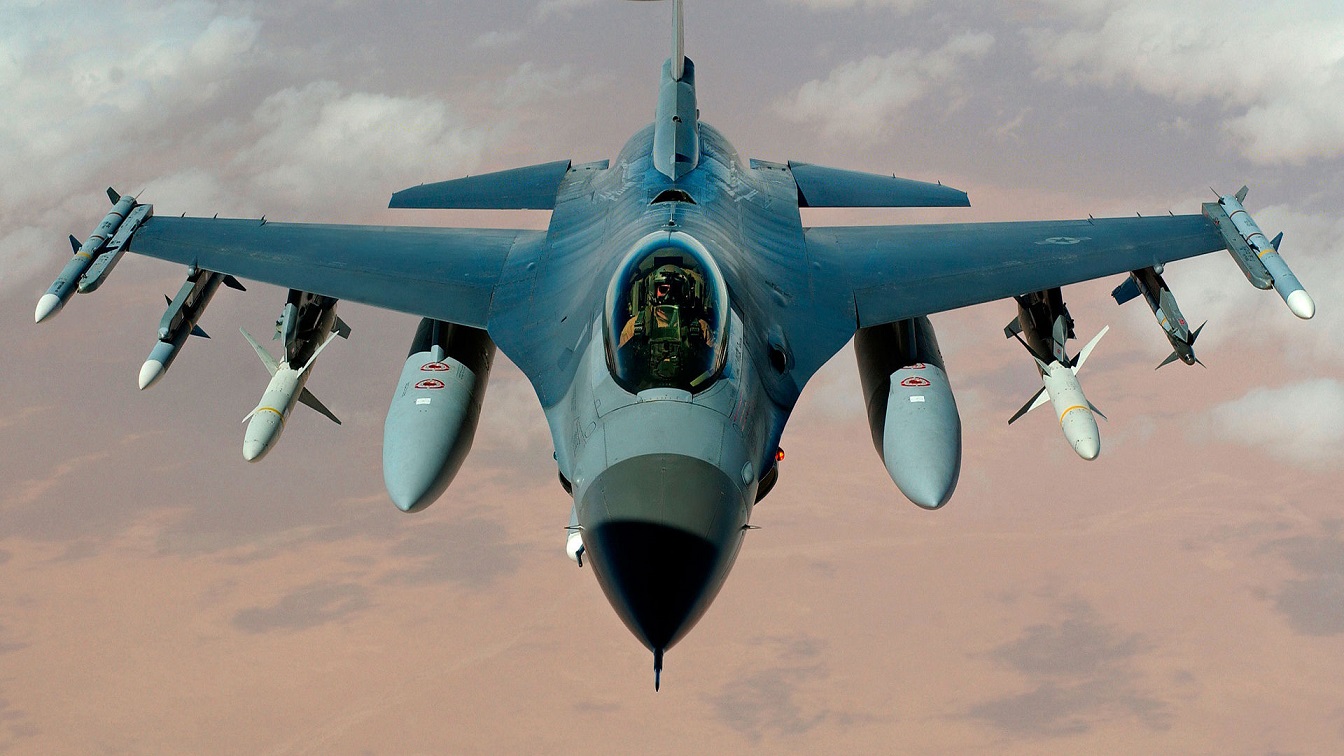F-16 update – any progress on Ukraine finally getting these timeless warplanes? Last week, Ukrainian president Volodymyr Zelenskyy reiterated his belief the West would soon supply the counter with modern fighters.
Since the onset of Russia’s invasion, Kyiv requested advanced airframes to aid its defensive efforts. An uptick in hostilities over the last few days combined with Ukraine’s looming counter-offensive has likely prompted Zelenskyy to once again call on North Atlantic Treaty Organization (NATO) members to supply Kyiv with fighter platforms like the F-16 Fighting Falcon.
While some industry experts believe that greater airpower could give Ukraine a more robust defense and offense in a relatively static war, others conclude that F-16s could easily become “sitting ducks” for Russia’s missiles.
Introducing the Fighting Falcon
Born out of the Lightweight Fighter program, the F-16 Fighting Falcon was developed in the early 1970’s and has remained a backbone of the U.S. Air Force. The compact, multi-role jet is highly maneuverable and can excel in both air-to-surface and air-to-air combat. Denmark, Belgium, the Netherlands and Norway joined a consortium with the U.S. to produce the fighter, which first flew in 1976. Equipped with a larger combat radius, the F-16 can out-fly enemy airframes.
As detailed by the Air Force, “Avionics systems include a highly accurate enhanced global positioning and inertial navigation systems, or EGI, in which computers provide steering information to the pilot. The plane has UHF and VHF radios plus an instrument landing system. It also has a warning system and modular countermeasure pods to be used against airborne or surface electronic threats. The fuselage has space for additional avionics systems.”
Arguments for and against delivering F-16s to Kyiv
In April, the Pentagon’s senior civilian and military leaders for Europe stated that delivering Western fourth-generation fighter platforms like the Fighting Falcon was not an “immediate priority” for the Department of Defense. These U.S. officials revealed that modern aircraft is about eighth on the list of prioritized weaponry and equipment being considered to ship the Kyiv.
Additionally, it was argued that the time needed to deliver these airframes and train Ukrainian pilots would be seriously delayed. As The Drive points out, it typically takes flight students straight out of flight school nine months to successfully get through the syllabus to fly the F-16. However, for experienced pilots who may already possess hundreds of flight hours and experience flying another fighter, the syllabus could be broken down to sixty nine days.
Considering Kyiv’s counteroffensive is looming, this training period, although shortened, would still take too long.
Another sticking pointcriticsagainst sending Kyiv F-16s often cite is infrastructure. Due to the Fighting Falcon’s sizable air inlet that easily “sucks everything from the ground directly into it,” specific housing of the platform is necessary to properly maintain the F-16.
Based on the jet’s apparent fragility when it comes to location, Kyiv is likely ill-equipped to house the airframes safely. However, Ukrainian officials have denied this position, noting that the country has the required infrastructure to deploy and operate modern airframes like the F-16. Some officials even hinted that Ukraine has already constructed the types of airways critics believe the Fighting Falcon needs to function.
According to former F-16 pilot John Venable, the Fighting Falcons are “completely unmatched” in higher-threat situations due to Russia’s formidable S-400 surface-to-air missile system. For this reason, providing Kyiv with these fourth-generation fighters would not impact their defensive efforts. On the other hand, some experts believe that despite the threat from SAMS and missiles, “Western fighters will undoubtedly provide a major boost to Ukrainian Air Force survivability and air-to-air lethality,” as purported by an airpower expert at the UK-based Royal United Services Institute.
There have been bipartisan efforts within congress to convince the White House to deliver F-16s to Kyiv. In March, a group of republican and democratic senators penned a letter to Defense Secretary Lloyd Austin requesting more information on what they call a top priority for Ukraine. “After speaking with U.S., Ukrainian, and foreign leaders working to support Ukraine at the Munich Security Conference last month, we believe the U.S. needs to take a hard look at providing F-16 aircraft to Ukraine,” the senators wrote. “This would be a significant capability that could prove to be a game changer on the battlefield.”
As the war continues and Kyiv weighs the commencement of its counter-offensive, the Biden team may face more pressure to provide Ukrainian forces with F-16 fighters.
MORE: The F-35 Now Comes in Beast Mode
MORE: Why the U.S. Navy Tried to Sink Their Own Aircraft Carrier
Maya Carlin, a Senior Editor for 19FortyFive, is an analyst with the Center for Security Policy and a former Anna Sobol Levy Fellow at IDC Herzliya in Israel. She has by-lines in many publications, including The National Interest, Jerusalem Post, and Times of Israel. You can follow her on Twitter: @MayaCarlin.

